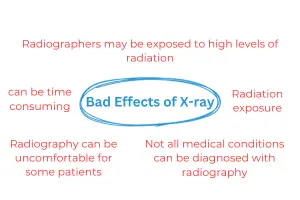World Radiography Day – History of X-ray Invention
Updated: 28 Dec 2023
230
Every Year professionals celebrate World Radiography Day on the 8th of November on the invention of X-rays by Wilhelm Röntgen in 1895. Radiography is a medical term for imaging to produce X-rays of the inner body. In the following lines, we are going to discuss the history, facts, and other useful information about Radiography.
What is Radiography?
Radiography is a medical process of taking images of the inner body to diagnose medical conditions.
Who are Radiographers?

Radiographers are highly educated professionals who use this technology to diagnose and treat different medical issues. This is the great invention of the 1800s which helped doctors from all over the world to cure their patient’s diseases to the point. With this technology, professionals get to know the medical conditions, including broken bones, infections, and tumors, and treat them accordingly.
Radiology is the hinge on which modern medicine turns.Sir Godfrey Hounsfield
History of Radiography or How X-ray Was Invented?
One day Rontgen was studying the effects of electricity on cathode rays. He noticed that a fluorescent screen was glowing even though it was blocked from the direct view of the cathode rays. He got curious and investigated further on the ays and electricity. Finally, he got to know that he could take images of the body with these rays.
The first time, he used this technology on her wife’s hand and he saw the bones and ring of her wife. Then he named this technology X-ray because the term was unknown then.
After some time this technology was used all over the world and within time new features and shapes were being produced. Now there are many types of X-ray machines and technology invented and doctors can diagnose different medical conditions.
Types of Medical Conditions that Could be Diagnosed in X-rays

- Broken bones
- Infections
- Tumors
- Heart disease
- Lung disease
- Digestive problems
- Arthritis
- Osteoporosis
- Cancer, etc
Facts
Here, are some facts about radiography:
- Radiography is the common type of medical term for imaging of the inner body which is used all over the world.
- X-ray images are created when X-rays pass the body and are filmed.
- X-ray is a safe and painless procedure to diagnose medical conditions and cure them.
- However, too many X-rays can raise the causes of Cancer.
Pros and Cons of Radiography
Here, are the advantages and disadvantages of radiography:
| Pros of X-ray | |||||
|---|---|---|---|---|---|
|
| Cons of X-ray | |||||
|---|---|---|---|---|---|
|
Benefits of Radiography (X-ray)

In the following lines, we will discuss the benefits of radiography in detail:
Non-invasive and painless
There are many benefits of this technology and one of them is the painless cure. Doctors use X-rays to diagnose medical conditions and cure them without any painful procedure.
Accurate and detailed images
Radiography is a procedure to take images and get to know the exact point where is the issue. This technology is very useful and helps professionals to save time and cure diseases accurately. Because X-ray helps to take accurate and detailed images that are used to cure.
Fast and convenient
Radiography is used to diagnose medical issues quickly and conveniently, saving a lot of time and helping to cure medical problems quickly. A fast cure is very helpful for patients who suffer from any condition. So that’s a significant and useful benefit.
Relatively inexpensive
If we compare radiography or X-ray to other medical technology it’s very inexpensive than other medical equipment.
Widely available
In this technology era, many advanced technologies are not available to the whole world. X-ray is one of the most widely available technology in all developing countries.
Luckily X-ray is a technology that is not more expensive and is widely available to all countries even in small and poor areas of developing countries.
Bad Effects of Radiography:

Everything existing in this world has good and bad effects. And this is the same for Radiography. As we know the magical benefits but here are some bad effects.
Radiation exposure
X-ray is a procedure of radiography and is a type of radiation that has enough energy to destroy DNA and can lead to Cancer. Although the risk of cancer is very low for most of the people.
Not all medical conditions can be diagnosed with radiography
We are all familiar with the advancements in science and technology but there is always a gap in all fields that should be filled. Some diseases can not be filmed with X-rays.
Radiography can be uncomfortable for some patients
Although there are many benefits of radiography, some patients do not feel comfortable with the procedure and use of machines.
Radiographers may be exposed to high levels of radiation
Radiography may be exposed to high levels of radiation and it can raise the chances of cancer and other medical issues. There is a complete kit for the professionals to wear while doing X-rays to safely complete their jobs.
Radiography can be time-consuming
Some major causes and medical issues take more time to film and diagnose the problem so it can be time-consuming in some conditions.
Conclusion
Well, we discussed the history, facts, and some pros and cons of Radiography. Hopefully, you have cleared all the concepts about X-ray invention and the amazing facts.
For me, this is a great and very useful invention of the 1800s. It helps a lot of people and professionals to serve their jobs and helps people to live a better life with their families. Each invention who leads to helps human lives is priceless but when it comes to Health it is a part of GREAT INVENTION.
So, this is the history of a great invention and I am waiting to hear from you about the information. Leave your comment.
Share awareness on the World Radiography Day! Have a good day!
What is World Radiology Day?
Every year on November 8th professionals and students celebrate this day. On this day we remember the efforts of the inventor of this amazing technology and also spread awareness to join this field as a career as well.
How X-ray was invented?
One day Wilhelm Röntgen noticed that a fluorescent screen was glowing even though it was blocked from the direct view of the cathode rays. He got curious and investigated further on the Rays and electricity. And then he invented this amazing technology.
Who was the inventor of the X-ray?
Wilhelm Röntgen invented this amazing technology in 1895.
Whom and which part of the body was x-rayed the first time?
Rontgen experimented with X-ray technology on his wife’s hand and saw her hand fingers clearly with the help of X-ray technology.
How many diseases could be diagnosed with x-rays?
Many major medical issues could be diagnosed with X-rays these days:
- Broken bones
- Infections
- Tumors
- Heart disease
- Lung disease
- Digestive problems
- Arthritis
- Osteoporosis
- Cancer
What are the benefits of X-rays?
There are many major benefits of this technology including painless cure, accurate diagonalization, fast, inexpensive, and widely available.
What are the bad effects of X-rays?
Some bad effects of X-rays are radiation exposure, not for all diseases, uncomfortable procedures for a few patients, high levels of radiation, time-consuming, etc.
Please Write Your Comments